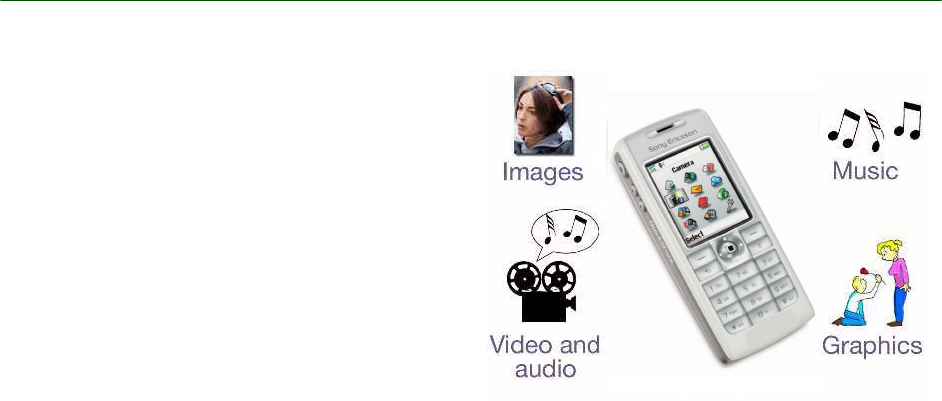
White Paper T630/T628
12 October 2003
Audio
With the sound recorder function in the T630/T628,
it is easy to make a voice recording, for example a
personal rendition of “Happy Birthday”. The audio
function in the T630/T628 also allows downloading
of sounds and melodies.
Themes
With themes, the user can change the appearance
of the display, for example the background colours
and the background picture. The phone comes
with a number of pre-defined pictures, and it is
possible to download additional themes. The maxi-
mum number of themes is limited only by the
amount of memory.
E-mail
With inbox, outbox, save draft and reply options,
you have all the functions you need for effective e-
mail communication in a powerful mobile phone.
Constantly connected to a POP3, SMTP or IMAP4
e-mail server anywhere on the Internet, your T630/
T628 stores messages dynamically, depending on
available memory, and updates your inbox auto-
matically and over the air. Check your e-mail any-
where. Reply to e-mail on the move. Friends, family
and business contacts know that when they send
you e-mail, you can receive, read and act on it
immediately. You can include pictures in outgoing
e-mails and receive attachments. Hyperlinks in e-
mails are supported.
MMS (Multimedia Messaging Service)
One of the key features in the T630/T628 is the
Multimedia Messaging Service (MMS), this is
expected to become the preferred messaging
method of mobile terminal users, since there are
virtually no limits to the content of an MMS trans-
mission. An MMS message (also known as a Pic-
ture Message) from the T630/T628 can contain
text, pictures, graphics, animations, images, audio
clips and ring melodies. For third-party developers’
information, please visit the Sony Ericsson Devel-
oper World.
Defined and specified by 3GPP as a standard for
third generation implementation, MMS completes
the potential of messaging. Sending digital post-
cards and PowerPoint-style presentations is
expected to be among the most popular user appli-
cations of MMS. Eagerly awaited by young users in
particular, MMS is projected to fuel the growth of
related market segments by as much as forty per-
cent.
Using the Wireless Application Protocol (WAP) as
bearer technology and powered by the high-speed
transmission technologies EDGE, GPRS and UMTS
(W-CDMA), Multimedia Messaging allows users to
send and receive messages that look like Power-
Point-style presentations. The messages may
include any combination of text, graphics, photo-
graphic images, speech and music clips. MMS
messaging will serve as the default mode of mes-
saging on all terminals, making total content
exchange second nature. From utility to sheer fun,
it offers benefits at every level and to every kind of
user.
F
igure 1. An MMS message can contain images,
m
usic, audio and graphics.


















